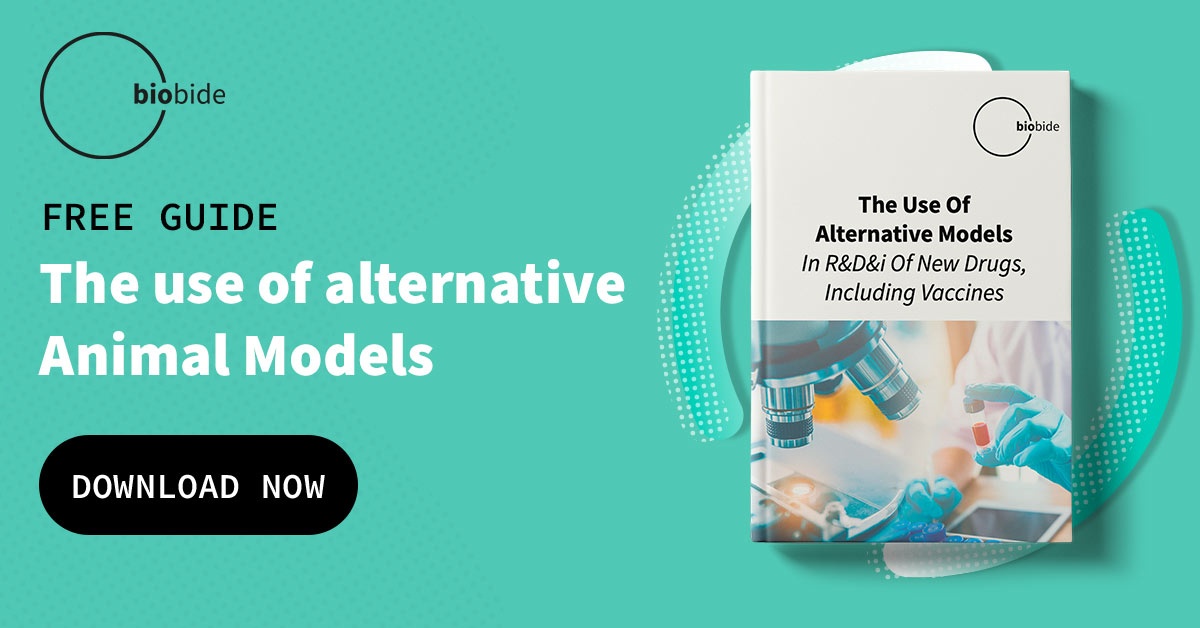Animal models are used to study the prevention and diagnosis of human diseases and the development of vaccines and pharmaceutical products. Many different types of animal models are used for testing and the species selected depends on several factors. It is essential to choose the right animal model to achieve success in disease research. The species used, including alternative models, can affect the cost, research time, and results. In this article, we'll review several different types of animal models, and how these apply to the 3Rs of research.

What Are the Different Types of Animal Models?
Many animals have a similar response to disease as humans and it is important to choose a suitable model to maximize the research benefits. Several different types of animal models are used in testing for human disease. The most common are mice, rats, guinea pigs, hamsters, gerbils, rabbits and Zebrafish. Animal models may be classified into several categories:
- Invertebrates such as flies (Drosophila), crustaceans (Daphnia) or worms (C. elegance) that serve as versatile models to dissect fundamental cellular and molecular processes.
- Vertebrates have a vertebral column and are selected according to their similar characteristics to the human biological system. This group includes mammals , Zebrafish, chickens, and frogs.
- Mammals are a more evolved class of vertebrates different from invertebrates in some biological features. For example, red blood cells in mammals do not have a nucleus, while those of vertebrates do. The main mammals used in research are rodents such as mice or rats, primates, cats, pigs, and sheep.
- Alternative animal models are used to reduce unnecessary testing on animals for both ethical and efficiency reasons. Alternative models include fish such as Zebrafish, Daphnia magna (water flea), birds, and amphibians.
Each category has a significant role in the study of human disease, with alternative models becoming more significant in the requirements to decrease testing on animals.
Why does Testing on Animals Continue?
Animals continue to play an important role in the study of disease as they are biologically similar to humans and are sensitive to many diseases such as cancer, heart disease, Parkinson’s disease and diabetes. Regulations require that research is carried out on animals before any drug testing can be performed on humans. It is acknowledged that in the process of the research, animals must be treated humanely by employing good husbandry practices.
However, alternatives are becoming a popular substitute for different types of animal models as they promote compliance with the 3Rs (Reduce, Refine, Replace) strategy. But research is not yet at a stage where it is viable to never use animals as there is a growing need to speed up the discovery of drugs to combat human disease.
What are Alternative Animal Models and Their Benefits?
An important factor in drug and disease research is the need to speed up the development process. There are many human diseases with no cure or prevention measures and research is the only way to facilitate this. However, it can cost approximately $4 billion and between 10-15 years to take a drug from the initial development phase through to market approval for use on humans.
Alternative models can save time and expense, which is good news for pharmaceutical companies. In the past few years, major advances have been made using these models, which have several benefits over animal testing used in the past.
Two common aquatic choices as alternative models are Zebrafish and Daphnia magna.
Zebrafish are an ideal alternative model as they:
- Reproduce quickly and can deliver up to 300 embryos at a time
- Are considered to be in vitro for 5 days after fertilization
- Are transparent so they are ideal for the study of their internal organs
- Are cheap and easy to house
- Mature fast – most organs are fully formed in 24 hours
- Regenerate their heart, eyes, and tail
- Share 70% of their genes with the human genetic makeup–their eyes, brain, liver and heart are similar to those of humans
Daphnia magna is suitable as it:
- Is transparent
- Is sensitive to water toxicity in aquatic studies
- Is cheap to breed
- Produces eggs in 7-10 days
- Shares parts of the human genome
While different types of animal models will still be required for medical research in the near future, alternative models have many advantages over standard animal models and are fast becoming the primary choice for many laboratories.





